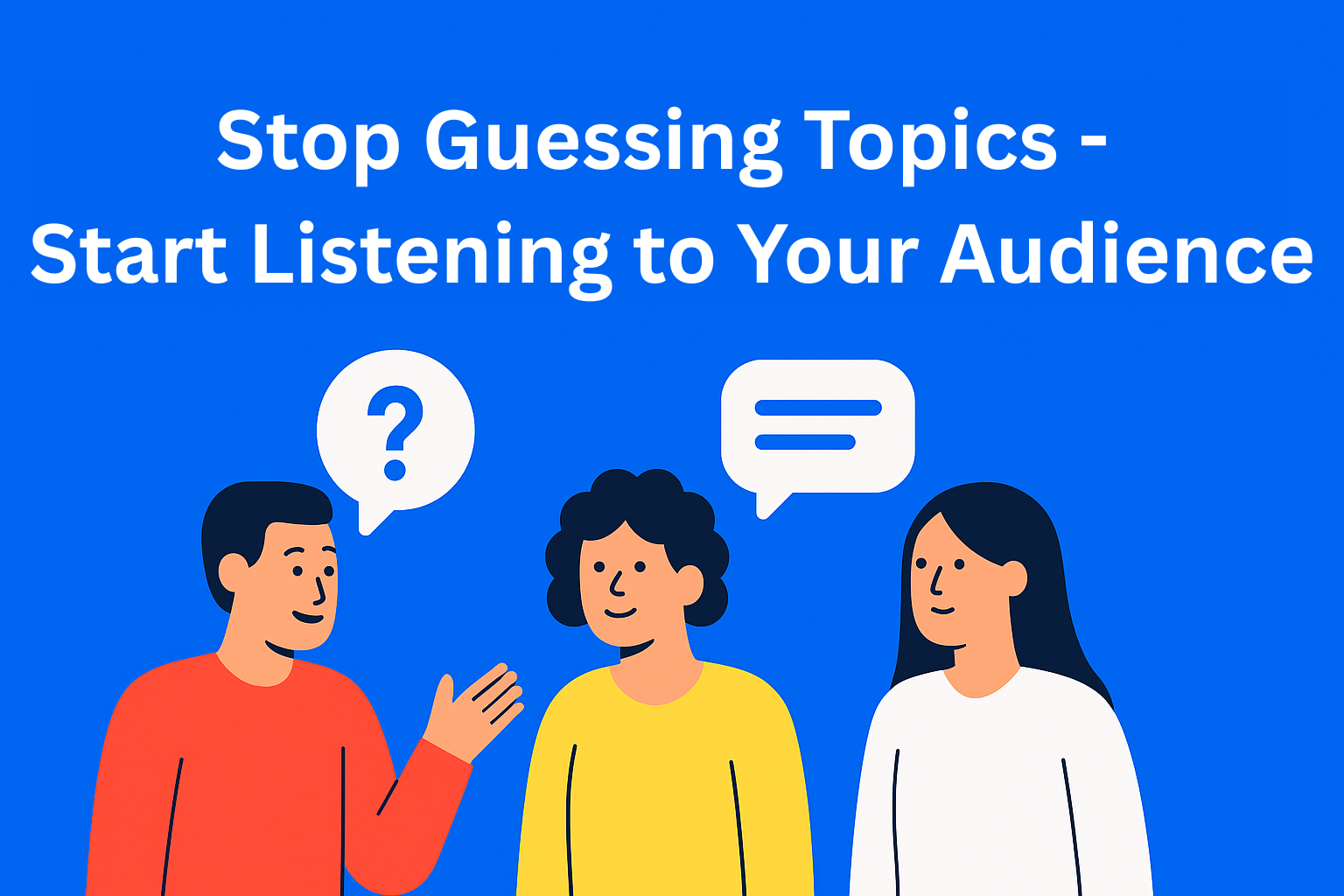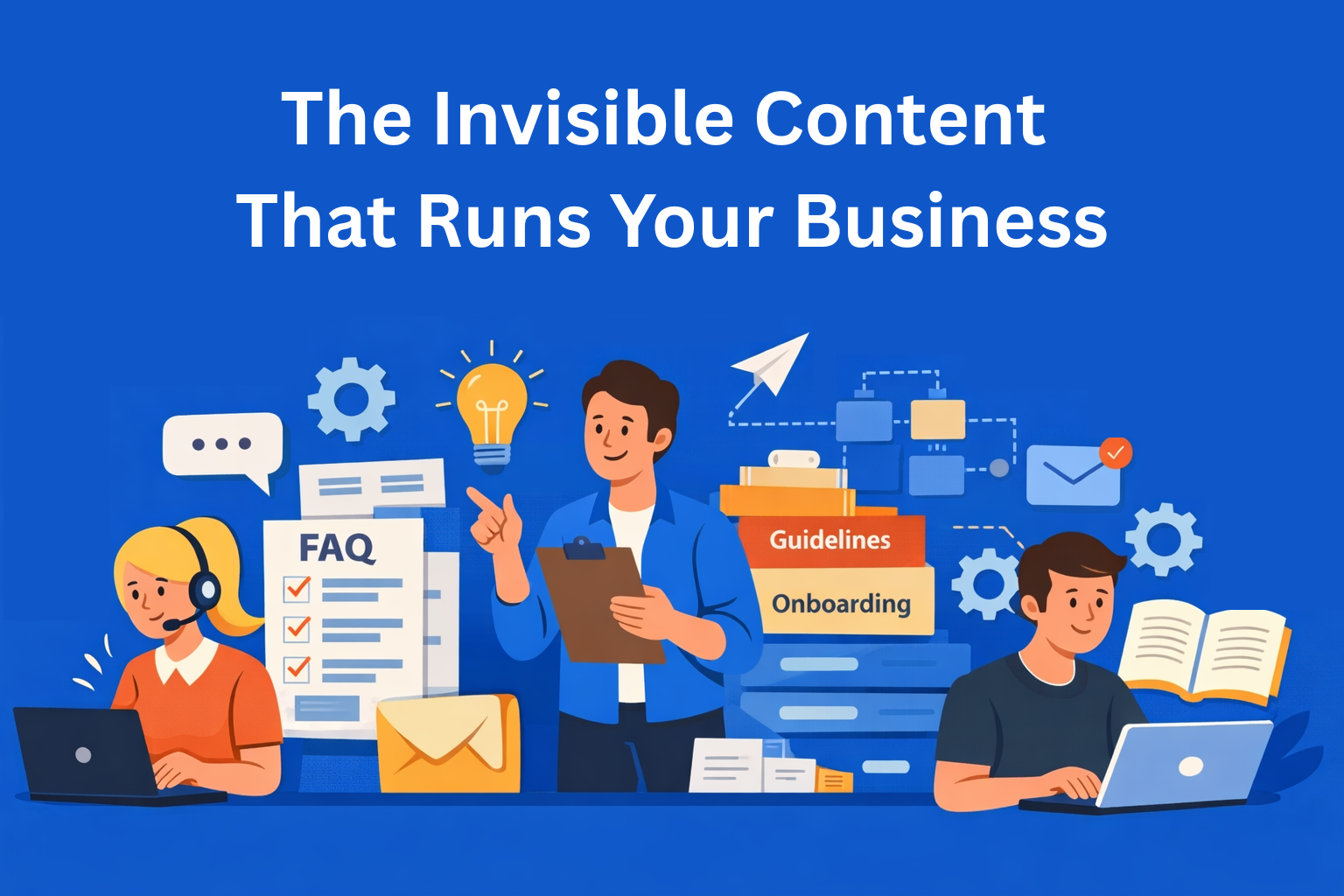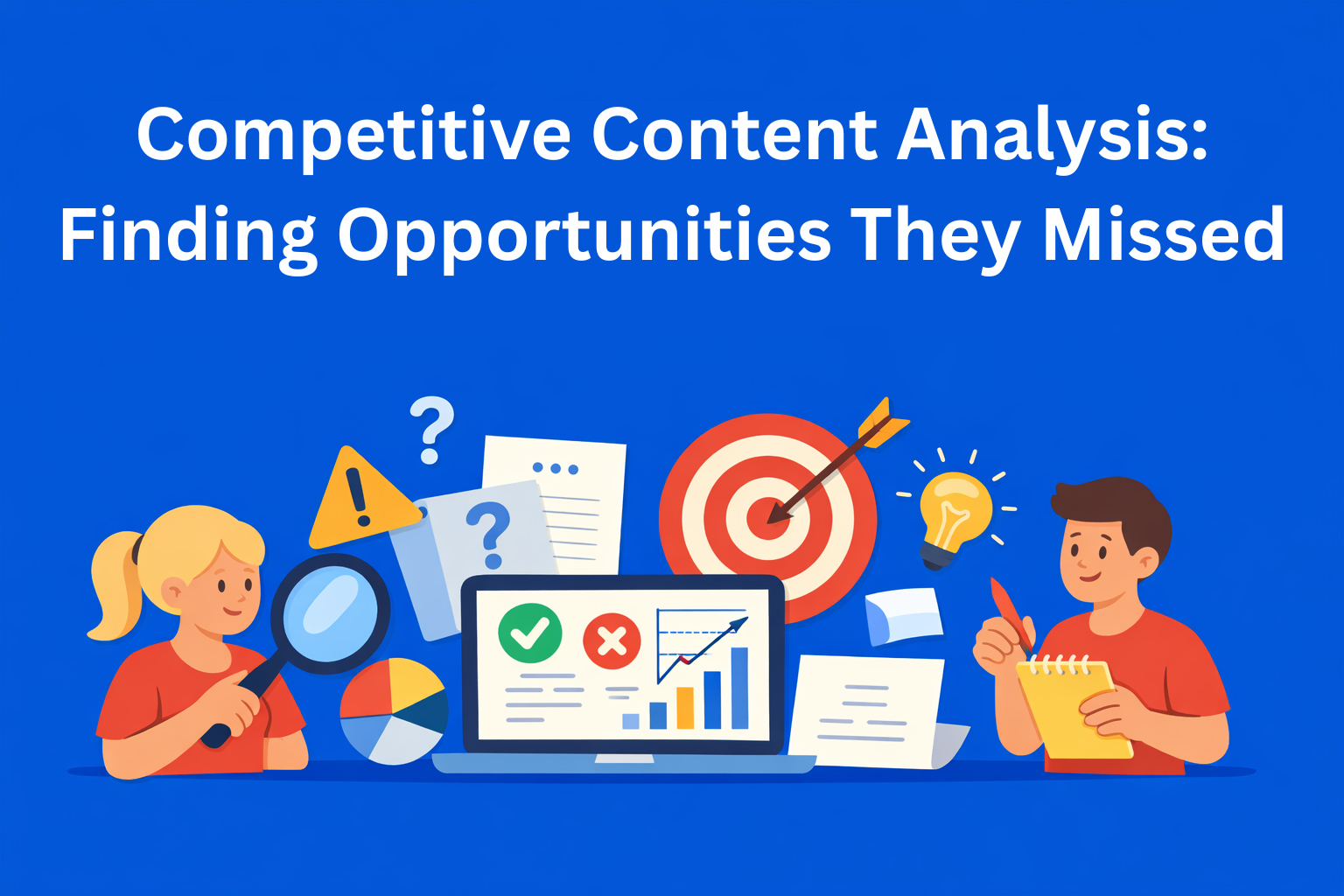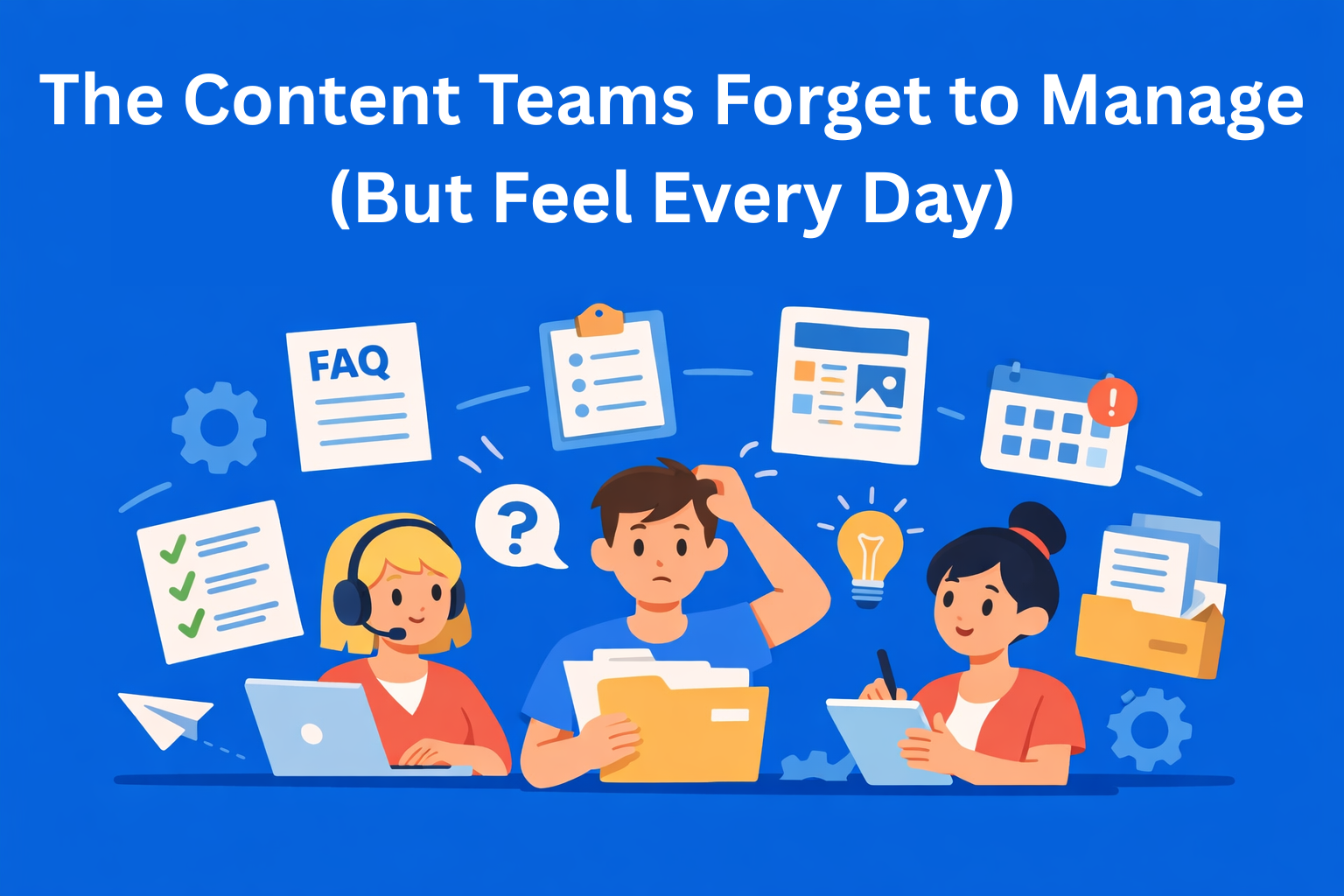Stop Guessing Topics - Start Listening to Your Audience
Your audience already knows what you should write about. Learn how to turn real questions, comments, and feedback into powerful content ideas that truly resonate, no guessing, just listening.

Most creators and small businesses try to come up with ideas. They look at what’s popular, follow trends, and hope to guess the right topic. But your audience already knows what they want to read about. Their questions and comments show what really matters to them. You just need to listen carefully and turn those words into your next piece of content.
Key Takeaways
- Your audience already holds the answers - real questions and comments reveal what truly matters, no trend-hopping or guessing required.
- Content ideas are everywhere - from support tickets to demo calls to DMs, every touchpoint hides signals you can turn into meaningful content.
- Go beyond the surface question - map audience questions to their underlying emotion or intent (fear, curiosity, doubt) to craft high-impact topics.
- Systemize idea capture - use tools like Notion, Airtable, or EasyContent to collect, tag, and revisit questions regularly.
- The best content starts with listening - when you treat questions as seeds, your content becomes human, relevant, and deeply resonant.
1. The audience already knows what you don’t
People ask questions and leave comments every day. All of these are small clues that show what matters to them. Inside those words lies a lot of content ideas. These are your intent-based topics - ideas that come from the real needs and curiosity of your audience.
For example, if someone asks in a comment: “How does this work in practice?”, that’s a sign. It’s not just a question; it’s a signal that you need to explain something people don’t fully understand. That’s where your next blog post, video, or social media post is born.
When you use your audience as a source of ideas, you stop guessing and start writing about things that truly matter to people. That’s when your content starts to resonate.
2. Where your audience is already talking (and how to listen)
Your audience doesn’t only speak in the comments under your posts. They communicate in many different places, and your job is to learn how to notice those moments.
Here are a few places where your audience is already giving you ideas:
- Social media: comments, messages, reactions to posts. People often ask things like “How can I apply this?”, “What tool do you use?”, “How long does it take?” - each of these questions can be a potential topic.
- Email and support: if you receive the same question multiple times, it’s a sign that there’s a knowledge gap you can fill with content.
- Sales and demo calls: people often express doubts and concerns. For example, “Does this work if I’m a beginner?” - a perfect headline for an educational post.
- Live sessions and Q&As: spontaneous questions in real time are gold for content ideas because you see what people really struggle to understand.
To keep track of all this, create a simple system. It could be:
- A Google Sheet with columns like Question / Source / Potential topic.
- A Notion table where you collect interesting comments.
- Or EasyContent, where you can save an idea as a brief and later claim it directly in the app to write a blog post, social media caption, or newsletter.
The most important thing: don’t rely on memory. Ideas from your audience are valuable only if you save them and come back to them later.
3. From questions to topics: turning audience insights into content
Now that you have a bunch of questions and comments, the next step is to turn them into real topics. This isn’t about copying the question into a headline, but understanding what’s behind it.
For example:
- Question: “How do I know if my content actually works?”
- Topic: “5 simple signs that your content truly changes your audience’s behavior.”
This process is called intention mapping - finding the intent behind the question. Every question has a deeper motive:
- fear (e.g. “Does this really work?”),
- ambition (e.g. “How can I achieve this too?”),
- doubt (e.g. “Am I good enough for this?”).
When you understand what truly stands behind a question, you can create content that hits the core issue. That’s what separates average posts from the ones that genuinely help.
Here’s a simple framework you can follow:
- Find a question that repeats often.
- Identify the emotion or intention behind it.
- Write a topic that solves the real problem, not just the surface question.
4. Tools and habits for capturing audience ideas
If you want this to become a habit, you need a system that helps you capture ideas regularly. The good news - it doesn’t have to be complicated.
Here are a few easy ways to do it:
- Notion database or Airtable: create a table where each entry includes the question, source, potential topic, and status (e.g. “written / in progress / idea”).
- EasyContent: if you work with a team, create documents where everyone can add questions they hear from users.
- CRM export: if you use tools like HubSpot or Pipedrive, export user questions once a month and categorize them by topic.
Then, set aside 30 minutes every week to go through those questions. For example, every Friday you can have a “Content Fuel Friday” - a small ritual where you pick 2–3 topics from your audience for the next week.
This makes your content real, relatable, and human.
5. Why this approach works (and gets better results)
Here are a few clear benefits of creating content that comes from real audience questions:
Stronger connection
Instead of guessing what they care about, you write about what they already want. Your content becomes an answer to a real need.
Faster idea testing
If people are already asking about a topic, it’s clear there’s interest. You don’t need to test from scratch - validation already exists.
Higher engagement
When someone reads your post and thinks, “Hey, that was my question!”, they instantly connect with you. People love to feel heard.
Fewer creative blocks
Instead of sitting and trying to come up with ideas, just check your folder of audience questions - inspiration is already there.
In essence, your audience is constantly telling you what to write about. You just need to listen and respond.
Conclusion
This approach teaches you something more important than just writing - it teaches you to listen. Great content doesn’t start with you; it starts with the people you’re writing for.
So, next time you see a comment or question, pause. Don’t see it as just another message to handle. See it as a seed of an idea. That one question might become the next topic that brings you attention and trust.
Your audience already knows what you should write about.
All you need to do is just listen.






